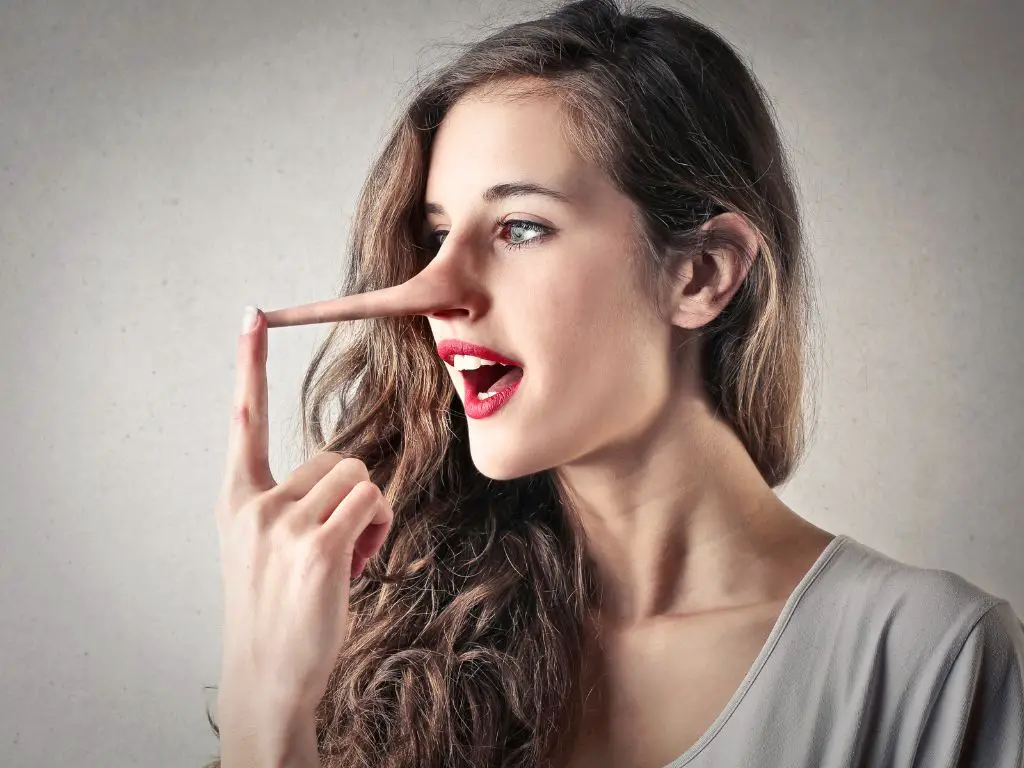Lying is a common human behavior that can range from harmless white lies to serious deception. According to a 2004 Reader’s Digest poll, as many as 96% of people admit to lying at least sometimes. However, lying can also have negative consequences for the liar and the lied-to, such as eroding trust, damaging relationships, and creating conflicts. Therefore, it is useful to know how to detect lies and spot signs of dishonesty.
How to spot a liar
There is no foolproof way to tell if someone is lying, as different people may exhibit different behaviors when they lie. However, there are some general indicators that can help you identify if someone is lying, based on their verbal and nonverbal cues, as well as the content and context of their statements.
Here are some tips on how to spot a liar:
Pay attention to body language.
Body language can reveal a lot about a person’s emotions and intentions, especially when they are trying to hide something. Some common body language signs of lying include:
1. Breathing rapidly or shallowly
This can indicate nervousness or stress caused by lying.
2. Fidgeting or staying completely still
Liars may either move too much or too little, depending on whether they are trying to appear calm or confident.
3. Avoiding eye contact or looking away frequently
Liars may feel guilty or uncomfortable when they look at the person they are lying to, or they may try to avoid being detected by looking for an escape route.
4. Touching the face, mouth, nose, or ears
Liars may unconsciously touch these areas to cover up their lies or soothe themselves.
5. Shrugging, nodding, or shaking the head incongruently with their words
Liars may betray their true feelings or thoughts by making gestures that contradict what they are saying.
Watch for microexpressions
Microexpressions are brief and involuntary facial expressions that last for a fraction of a second and reveal a person’s true emotions. They can either match or contrast their words, too. For example, a person might speak very confidently, but once they stop talking, both corners of their mouth might quickly lower in a frown. Some common microexpressions that indicate lying include:
1. Raising the eyebrows slightly.
This can indicate surprise or fear of being caught.
2. Curling the lips inward
This can indicate tension or anger.
3. Pressing the lips together
This can indicate withholding information or displeasure.
4. Showing contempt or disgust
This can indicate disdain or resentment towards the person they are lying to.
Listen to their voice and speech patterns
Voice and speech can also provide clues about a person’s honesty and credibility. Some common voice and speech signs of lying include: ²³
1. Changing the pitch or tone of voice
Liars may raise or lower their voice to sound more convincing or hide their emotions.
2. Speaking faster or slower than usual
Liars may speed up their speech to get over with the lie quickly or slow down their speech to think of what to say next.
3. Pausing or hesitating before answering questions
Liars may need time to fabricate or recall their lies, or they may repeat the question to stall for time.
4. Clearing the throat or swallowing frequently
Liars may experience dry mouth or throat due to anxiety or stress caused by lying.
Analyze the content and context of their statements
The content and context of what a person says can also reveal inconsistencies, contradictions, or implausibilities that indicate lying. Some common content and context signs of lying include:
1. Being vague or offering few details
Liars may avoid giving specific details that could expose their lies or make them harder to remember.
2. Providing too many details or irrelevant information
Liars may also overcompensate by giving excessive details that sound rehearsed or fabricated, or by adding unnecessary information that distracts from the main point.
3. Changing the story or contradicting themselves
Liars may have trouble keeping track of their lies and end up saying something different or opposite from what they said before.
4. Avoiding direct answers or deflecting questions
Liars may evade answering questions directly by changing the subject, asking another question, making
5. Using qualifiers or distancing language
Liars may use words such as: maybe, probably, could, or might to weaken their statements or avoid commitment. They may also use phrases such as: to be honest, to tell you the truth, or as far as I know, to imply credibility or hide doubt. Additionally, they may avoid using personal pronouns such as I,we, or you to distance themselves from the lie or the person they are lying to.
6, Making excuses or blaming others
Liars may try to justify their actions or shift the responsibility to someone else to avoid accountability or consequences.
These tips can help you identify if someone is lying to you, but they are not foolproof. Some people may be better at lying than others, or they may have learned how to mask their signs of lying. Moreover, some signs of lying may also be caused by other factors, such as nervousness, anxiety, stress, or embarrassment. Therefore, it is important to consider the context and the baseline of the person you are talking to, and not to rely on a single sign or behavior. You may also need to ask follow-up questions, check for evidence, or confront the person directly if you suspect that they are lying to you.
Remember that lying is a complex and multifaceted phenomenon that can have various motives and consequences. Sometimes, people lie for good reasons, such as protecting someone’s feelings, maintaining privacy, or avoiding conflict. Other times, people lie for bad reasons, such as manipulating someone, gaining an advantage, or covering up a wrongdoing. Knowing how to detect lies can help you protect yourself from deception, but it can also help you understand why people lie and how to deal with them.
References:









